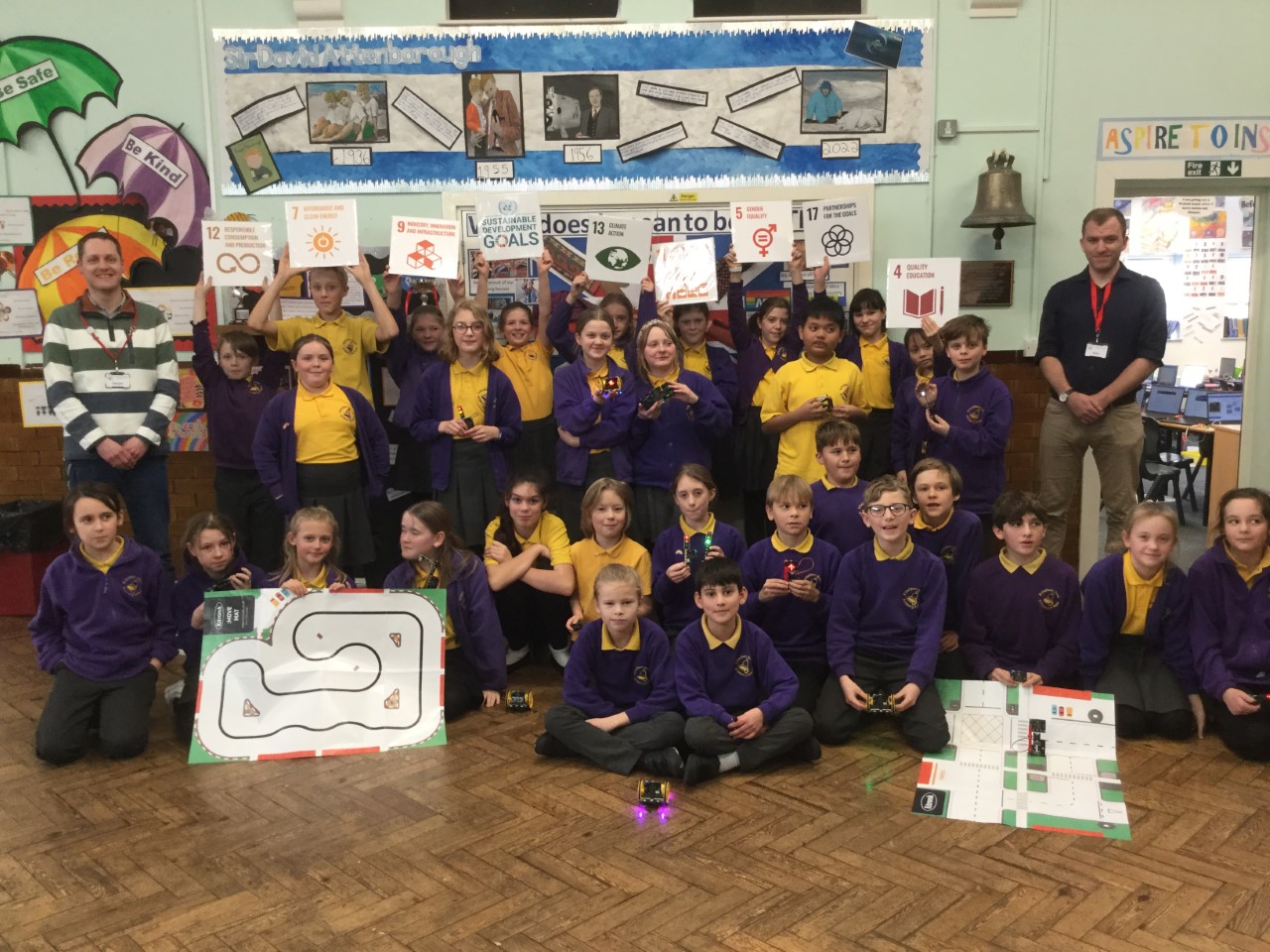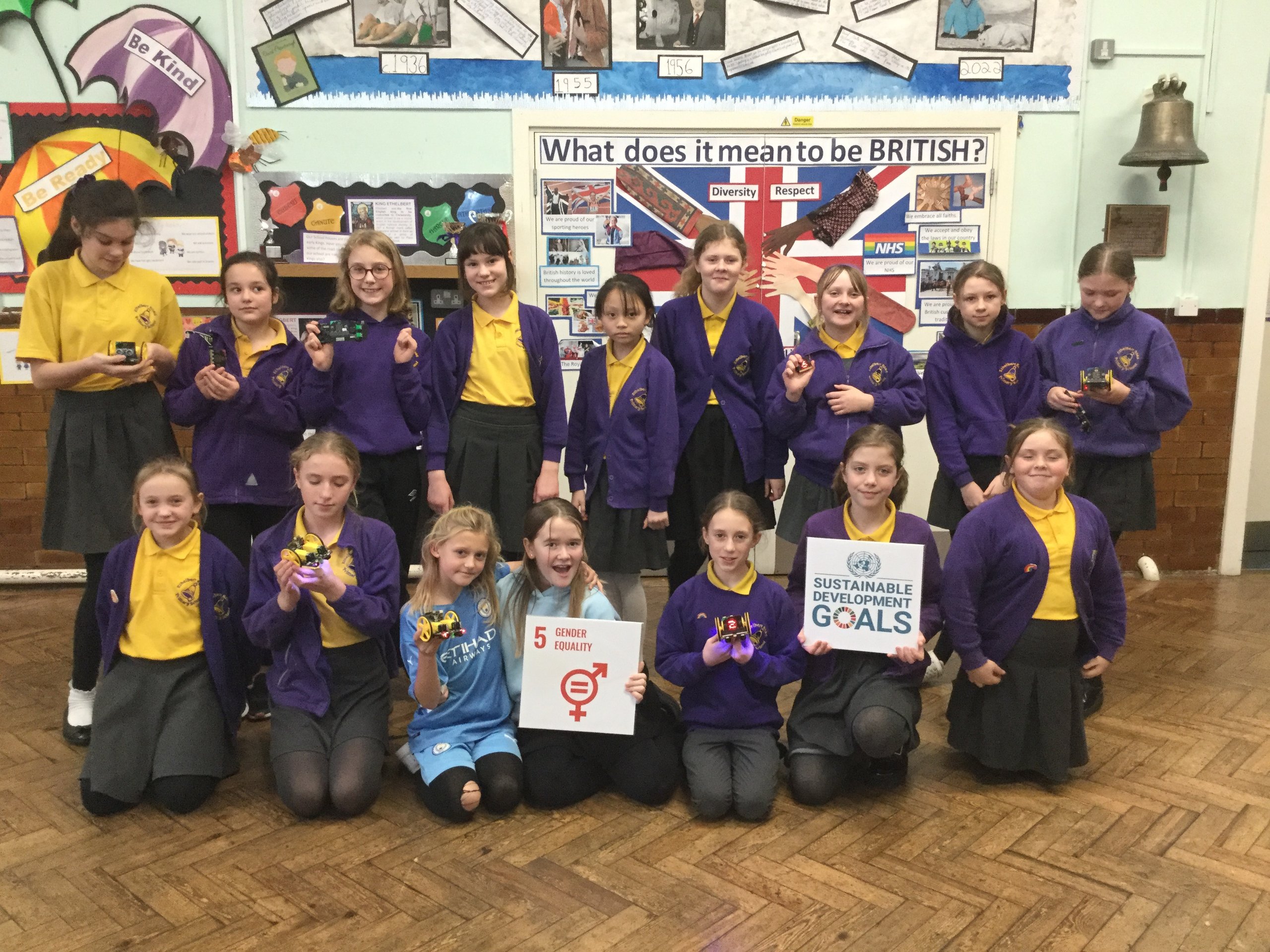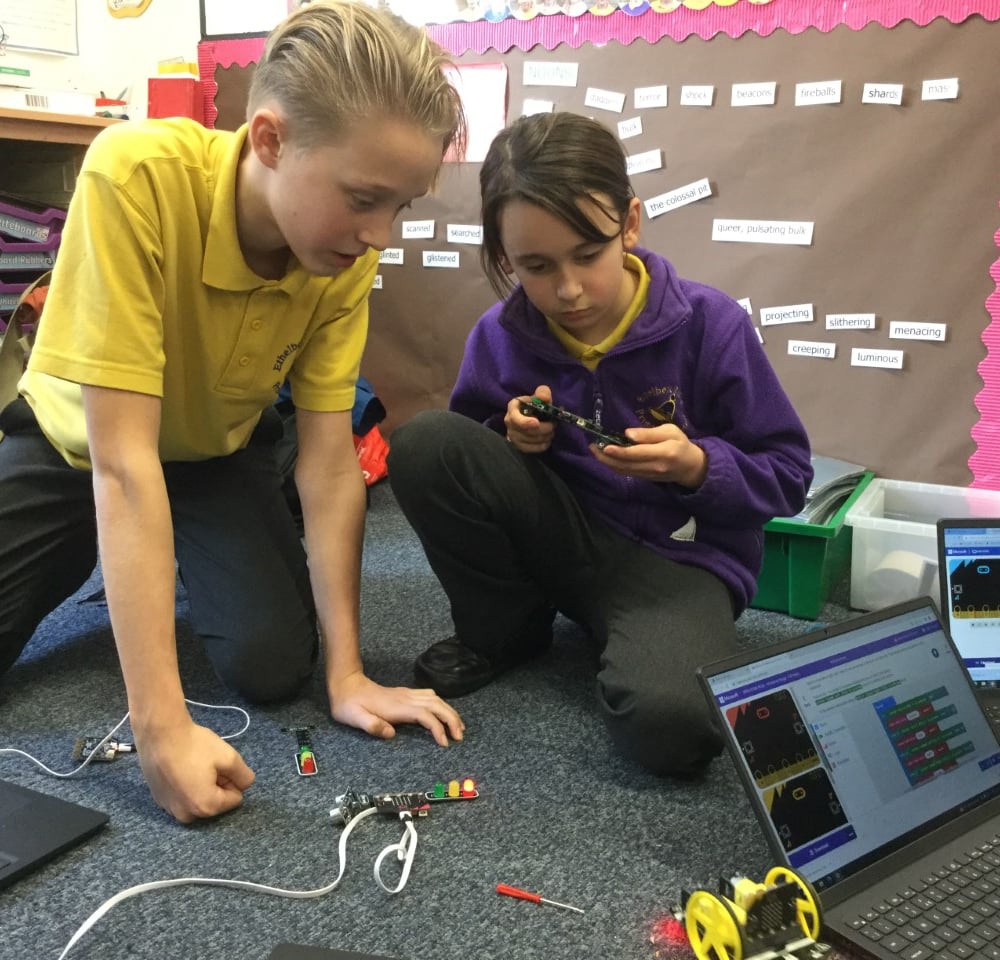Tim Carter – April 14, 2023 – 14 min read
In 2018 I was introduced to Matt Rabagliati, the Head of Policy, Research and Communications, at the UK National Commission for UNESCO. As a professional software engineer, with a special interest in data development, sharing, and open data, we brought our collective knowledge and experience together, with colleagues from the Canadian Commission and academia. Over the course of several years, we researched how UNESCO sites could be flagbearers for driving the concepts of the UN Sustainability Development Goals (SDGs), and in October 2022 we published and showcased a report1 to the UNESCO General Conference. Not only was this research a really great example of joining together the power of the UN, academia, and industry, but also inspired me to think more deeply about the SDGs, and how I could apply them to both my professional work, and the volunteering I do as a STEM (Science, Technology, Engineering, and Maths) Ambassador in the UK.
Having worked with young people for many years to inspire them to become more interested in computing and STEM more widely, to meet the skills gaps that the UK and the world in general faces, I was particularly influenced by the UNESCO Engineering for Sustainable Development report2, released in 2021. In this report, it is laid out how engineers and scientists of all kinds, from all places, can work together to meet the challenges outlined by the SDGs. Could this be applied to my role as a STEM Ambassador, making the SDGs more of a focus when talking to young people about the power of STEM subjects? For me, this seemed like a perfect challenge and a great way to make the volunteering I was already doing at a local level more relevant to real world issues. An excellent article in HelloWorld magazine, supported by the Raspberry Pi Foundation, also discusses the way in which the SDGs can be introduced to students, and more importantly, what the point is3!
Ethelbert Road Primary school, which is in Kent in the southeast of England, has been at the heart of my STEM volunteering activities over the years. We have run Code Clubs together, and most recently I have been supporting the teachers of Key Stage 2 students (aged 7-11) by running hands-on physical computing sessions using BBC micro:bits4. So, when I was asked to run the Year 6 (ages 10-11) STEM Week in February 2023, I immediately accepted and went to work to see if we could make the SDGs be at the core of our activities. The overall theme was ‘transport’, and Year 6 specifically on the topic of ‘vehicles and town planning’. Making use of my company, Niaxo’s, Corporate Social Responsibility (CSR) plan, we purchased a new set of micro:bit’s so that every student could make use of new equipment, and then self-funded some brilliant transport-themed kit from UK-based supplier Kitronik5.

During the week, I was exceptionally fortunate to work alongside a very passionate group of teaching staff, and a school senior leadership team who really value the impact of STEM learning on their students. So much of this was disrupted during the COVID-19 pandemic, but none of this would have worked without the amazing support given by the staff, who are keen to bridge the gaps seen during this time. Our focus during the week was on physical computing; allowing the students to learn programming skills, develop their computational thinking, and most importantly have fun! By following a process of ‘task’, ‘design’, ‘build’ and ‘run’, students were able to evaluate what they were trying to achieve, make decisions based on the equipment they had, do some quite complex coding challenges, and then act as professional engineers do by testing, debugging, and evaluating outcomes. An overriding theme of the week was how to incorporate the UN SDGs in to our engineering and computing activities, describing what it means to be a ‘sustainable engineer’, and why this is important. We focused specifically on SDGs 7 (Affordable and Clean Energy), 9 (Industry, Innovation, and Infrastructure), 11 (Sustainable Cities and Communities), 12 (Responsible Consumption and Production), and 13 (Climate Action). Additionally, we spoke about the need for a wide-ranging set of educational activities and promoted the great work that their teachers do (SDG 4 – Quality Education), as well as the importance of equality and diversity within STEM and the engineering workforce (SDG 5 – Gender Equality). Finally, we discussed how as part of SDG 17 (Partnerships for the Goals) we must all work together as students, teachers, professionals, and volunteers, to make the goals a reality.
Throughout the week, before the fun of the equipment was unleashed, each day we had a discussion around these SDGs, allowing the students to draw links between global concepts and how they would affect them at a local level. For example, we discussed the UK’s energy mix as reported by the UK National Grid, and how that impacted how sustainable we are as engineers using computers, servers, and other eclectically powered equipment (SGD 7, 12, and 13). This led to conversations about cleaner energy sources, and how this was being tackled locally with a solar farm about to be built on their doorstep, and the offshore windfarms that they could see from their local beach. We also discussed how efficiently we were using the equipment, and what impact powering the equipment using batteries had, and what happens when our equipment reaches the end of its life (SDG 9, 11, and 12), generating millions of tonnes of e-waste. During one afternoon of the week, Matt from the UK Commission visited us, and provided us with more context around the formation of the UN to drive an agenda of peace and cooperation, and inspiring the students to think more deeply about the world around them, and the global community of which they are a part.
In keeping with their overall theme, the students programmed a range of equipment, including traffic lights, streetlamps, barriers, motorised buggies, and solar panels. Not only did they get to consider how each of these addresses the needs of local communities, but also how to control them efficiently and effectively in line with the concepts of the SDGs. For example, the students were able to code their streetlamp to make use of a phototransistor, which means that the light is only on when it is dark enough to be needed, demonstrating an awareness of sustainable energy usage and the impact (SDG 11 and 12), as well as knowledge of how to innovate solutions to common challenges (SDG 9). The students also used radio communication to synchronise equipment, such as traffic lights and barriers, to explore the concepts of efficient design and smarter solutions to building more sustainable cities (SDG 9 and 11). The motorised buggies were not only the most popular programming activity, but also allowed the students to explore self-driving vehicles using a line following sensor (also discussed as part of SDG 9 and 11), which also opened the door for a debate on Machine Learning (ML) and Artificial Intelligence (AI) and the ethical implications of their use (SDG 9 and 11). The week ended on the students having a ‘buggy race’ with their motorised buggies (unsurprisingly very popular, and noisy!), and an opportunity to share their experiences of the engineering tasks, as well as a discussion on the role of the SDGs in their lives, to other students at the school.

As an engineering professional, it is always brilliant to see how young engineers take to the tasks and challenges set in these kinds of settings. The pupils of Ethelbert Road did themselves, their teachers, and their school immensely proud during my time working with them. They simply excelled in their programming, testing, debugging, and electrical engineering skills, and showed how amazing they are at working together and supporting each other. Young people, in my experience, are especially adept at forming teams and working collaboratively, and the students at Ethelbert Road are a shining example of this. I was completely blown away by their enthusiasm and commitment to each of the activities that were set, and it was especially fantastic to see that the young women of the class were as engaged and enthusiastic as the boys. Like in many places across the world, the UK has identified a skills gap when it comes to computing and engineering skills, and a significant gender imbalance. However, I have no doubt that if we continue to nurture the kinds of attitudes and hard work that I saw during this week, the future of these professions is entirely safe. It is hard to understate how important it was to ensure that the girls within the group were engaged and energised. We know that the same kinds of misconceptions around girls taking part in wider science and maths activities are also prevalent in engineering and computing, and events like this are key to resetting these outdated notions. On top of this, each and every single student was acutely aware of their impact as an engineer and came away with a better sense of how their skills could be used to help reach the goals set out by the SDGs, at both a local as well as a global level.
None of this would be possible without the other passionate people around me, and so I would like to say thank you to Matt and his exceptional team at the UK Commission for UNESCO for all the work that they do globally and here in the UK, to drive the UN and UNESCO’s mission. Also, for inspiring me to be more aware of the SDGs and my personal role in helping to achieve them. I would also like to say thank you to Niaxo for giving me the freedom and flexibility to be a STEM Ambassador, and for allowing us to set an example that other technology companies around the world could follow. Finally, to the amazing students at Ethelbert Road Primary School. Your passion for learning, your kindness, your empathy, and your sense of fun are what make you the custodians of our future. Keep being kind to each other and supporting your community. Take the skills that you have learnt, and that you are so good at applying, and make the world a better place, not just in the UK but everywhere.
Tim Carter – Technical Director at Niaxo & UK National Commission for UNESCO partner
Share this via…



